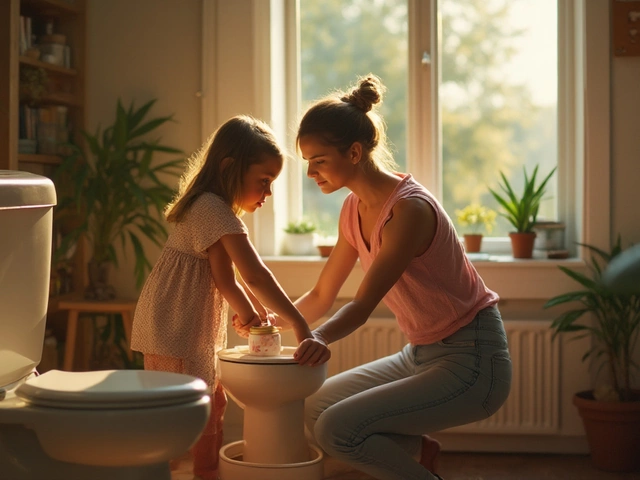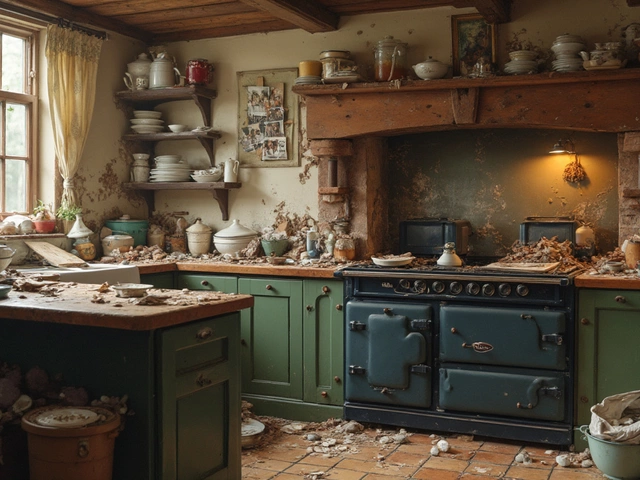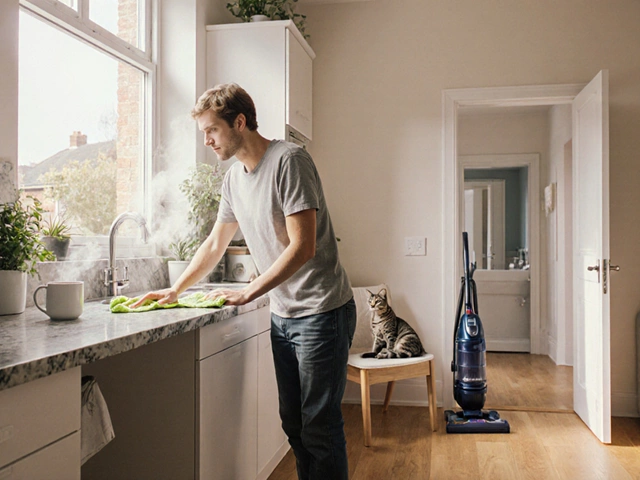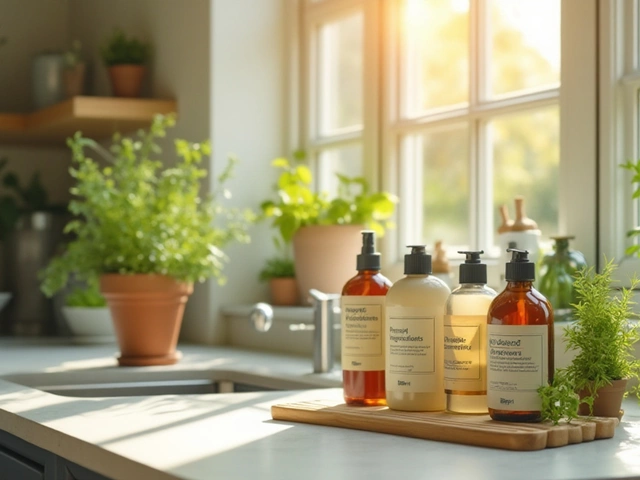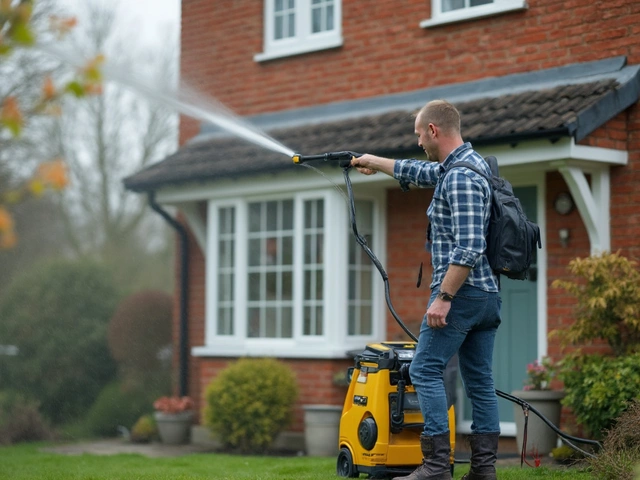Ever noticed an ugly stain on your couch that makes you cringe every time you walk by? Spilled coffee, muddy paw prints, or just the smudges from daily life—furniture goes through a lot more than we like to admit. Instead of reaching for a pricey bottle of store-bought spray or calling in professionals, you can whip up your own upholstery cleaner with stuff already in your kitchen cupboard. The real difference? DIY cleaners actually work, and there’s real science behind why they do. Whether you’re on a budget, keeping it eco-friendly, or just want something safer for pets and kids, making your own cleaner makes barking sense.
Understanding Upholstery Fabrics and Their Unique Needs
Before grabbing a bucket or dousing a stain, you’ve got to know your fabric. Not all upholstered furniture is the same. Some sofas come with velvet that's as delicate as a cloud; others have old-school, scratchy tweed or tough, synthetic blends. Manufacturers usually tag the underside of cushions with codes: W means water-based solvents are safe, S means use solvent only, WS means you can go either way, and X? That one’s vacuum only—no liquids allowed or you risk a disaster. If you’re not sure, mix your cleaner and dab a hidden spot. If it soaks in weirdly, leaves a mark, or causes dye to bleed, don’t use it for the rest.
Natural fibers like cotton and linen love gentle cleaning and hate too much water—water can leave those weird water rings once it dries. Synthetics like polyester, acrylic, and microfiber are way more forgiving, but still dislike scrubbing too harshly. Leather isn't your regular upholstery—skip water-based cleaners altogether and reach for mild soap or special leather cleaner. Pay attention to what your furniture is telling you. If you treat delicate silk like hardy outdoor canvas, you’ll end up with a disaster.
Already checked your tag? Here’s something you might not expect: lots of upholstery looks fine after a cleaning, only for stains to “wick back up” a few hours later as it dries. That’s because the stain spread deep inside—your cleaner only handled the top. Go light on moisture and blot stains as you go. Test a Q-tip of your mix for colorfastness, and always avoid strong stuff like bleach, which just damages fibers and leaves faded marks. The right approach saves a fortune on replacement cushions or professional deep cleaning.
Here’s a quick reference for fabric care:
| Fabric Type | Best Cleaning Method | Avoid |
|---|---|---|
| Cotton/Linen | Gentle, water-based cleaner; blot, don’t soak | Too much water, scrubbing, harsh chemicals |
| Polyester/Microfiber | Water-based, gentle scrubbing | Bleach, high heat |
| Velvet | Dry cleaning preferred; very gentle blotting | Excess moisture, strong agitation |
| Leather | Mild soap and water, leather conditioner | Water soaking, alcohol, harsh cleaners |
Top DIY Upholstery Cleaner Recipes That Actually Work
People have come up with a thousand secret formulas for homemade cleaners, but some simple recipes really do outperform the rest. The magic is in ordinary ingredients. Vinegar, baking soda, dish soap, and hydrogen peroxide are usually safe bets, but when used right, each tackles specific stains without wrecking your furniture.
- Baking Soda Spot-Treatment: Sprinkle baking soda directly onto the stain, let it sit for 30 minutes, then vacuum away. For smells—think pet odors—baking soda is your best friend.
- Vinegar and Dish Soap Spray: Mix 1 cup warm water with 1/4 cup white vinegar and a couple drops of dish soap in a spray bottle. Mist the stain—not soak it—let it rest 5-10 minutes, then blot. Vinegar neutralizes odors and, combined with a mild soap, cuts through grime without sticky residue. Don’t worry about the vinegar smell; it fades fast.
- Hydrogen Peroxide for Tough Stains: Great for light-colored upholstery. Mix equal parts hydrogen peroxide (3% solution) and water, add a few drops of dish soap. Use this mix for wine, blood, or set-in food stains. Always spot-test first, as hydrogen peroxide can bleach colors.
- Rubbing Alcohol for Microfiber: Pour rubbing alcohol (isopropyl alcohol) into a spray bottle, lightly mist stained area, and scrub gently with a clean white sponge. As it dries, use a soft scrub brush to fluff the fibers.
- Citrus and Essential Oil Boosters: Got stubborn smells? Add a few drops of lemon or lavender essential oils to any DIY recipe. Smells great, masks mustiness, and citrus oils break down greasy stains.
These simple recipes beat commercial sprays not just on price, but safety—you know exactly what’s hitting your couch. No weird fumes or skin-burning mystery chemicals. The real secret is patience: let the solution do its work before you dab or blot, and never rub in circles, which just spreads the mess.
One mom in Portland found her toddler’s marker art could be nearly erased off a tan couch using rubbing alcohol and a microfiber cloth, letting her skip an expensive pro cleaning entirely. If you’re battling pet hair, use a slightly damp rubber glove to collect it before cleaning stains. Trust me—these tricks turn a cleaning headache into almost-satisfying work.
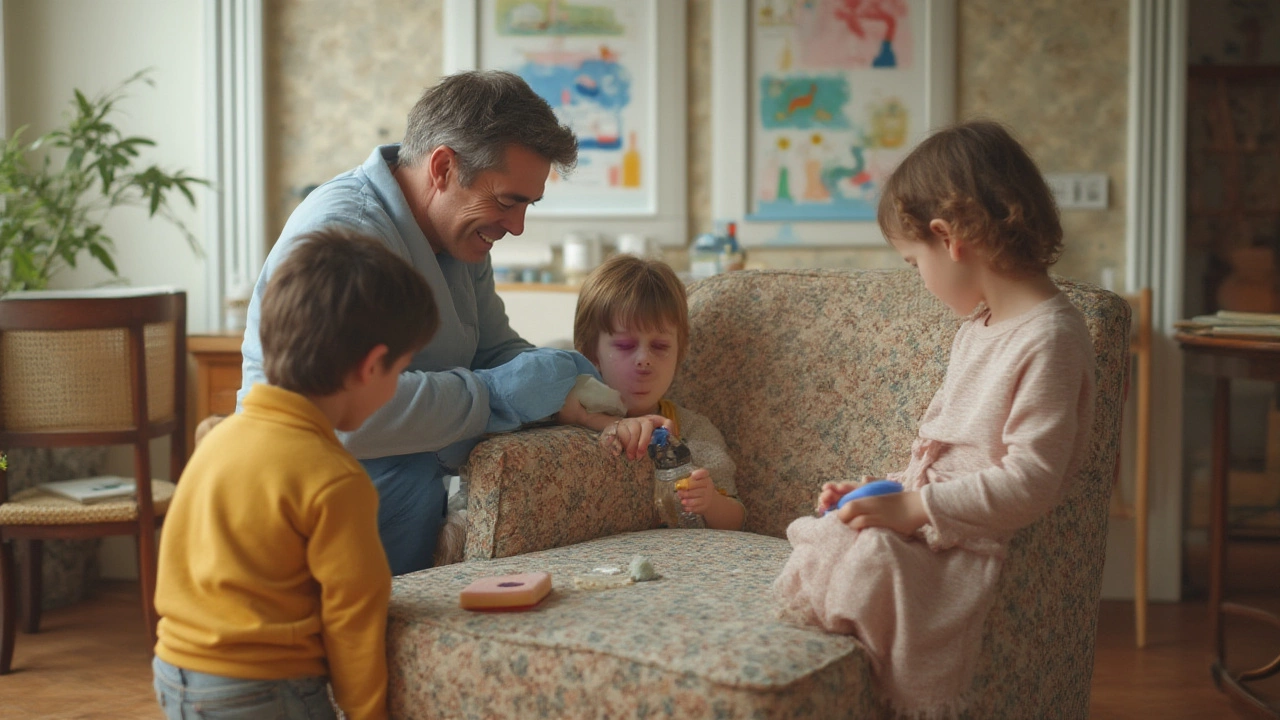
Pro Cleaning Hacks for Stains, Smells, and Tough Messes
There’s a big difference between a quick wipedown and an SOS rescue after a party spill. Every type of stain acts differently. Tannins in coffee or red wine, for example, bond with fabrics and can get worse if you use the wrong cleaner. The key is to act fast. Don’t give that stain time to set in like an accidental tattoo.
- Blot, never rub – Get a clean, dry cloth, and press it over the stain to soak up as much as possible before you do anything else. Rubbing just pushes the stain deeper.
- Start gentle – Use only water at first if you can. It won’t make things worse, and often picks up superficial dirt.
- Apply your cleaner sparingly – Less is more. Too much liquid just creates bigger rings and more drying time.
- Work outside in – Always clean from the outside edges of a stain in towards the center to stop it from spreading out.
- Dry thoroughly – Point a fan right at the spot after you finish cleaning to help it dry before mildew or odors can start.
Here’s a spotlight on common stains and what really works:
- Grease/Oils: Sprinkle cornstarch or talcum powder straight on, leave an hour, vacuum off, then treat with mild soap solution.
- Red Wine: Blot immediately, sprinkle salt to pull up moisture, vacuum when dry, then dab with hydrogen peroxide mix.
- Coffee/Tea: Blot, then use vinegar-and-water solution followed by a little dish soap.
- Ink/Pen: Tiny bit of rubbing alcohol on a cotton swab, careful to keep it off unstained fabric.
It’s normal for someone to panic and dump half a gallon of cleaner on a giant spill, but resist. You can always go back and treat a stain again if needed—it’s harder to reverse damage from too much liquid. Pet stains? Make a paste with hydrogen peroxide and baking soda, let it bubble for five minutes, then wipe and dry. You’ll notice the smell and stain fade before your eyes.
Keeping It Eco-Friendly and Safe for Families and Pets
Typical store-bought cleaners come with warning labels: “Use in well-ventilated area.” Why risk strong chemicals, especially if you have crawling toddlers, curious pets, or allergies in your household? The beauty of DIY upholstery cleaners is total control. Each ingredient has a purpose and is safe at normal levels for home use.
According to a 2023 EPA survey, indoor air can be two to five times more polluted than outside, thanks in part to harsh cleaning products. Vinegar, baking soda, and plant-based soaps work just as well, minus the nose-burning chemical clouds. Wash rags and old t-shirts make for softer, cheaper cleaning cloths, and ditching single-use wipes keeps both your wallet and landfill load lighter.
Baking soda and vinegar both break down naturally and don’t pollute water systems. If you keep your recipes simple—a few main ingredients—you can toss leftovers down the drain without stress.
Want an extra layer of safety for pets? Make sure to wipe down with plain water after using soap or vinegar near anything they’ll lick or chew. For musty couches, drop essential oils (just a few drops per half-liter, since concentrated oils can bother sensitive cats and dogs) into your spray bottle for a finishing scent.
Here’s a table of safe and not-so-safe ingredients:
| Ingredient | Eco & Pet Safe? | Notes |
|---|---|---|
| White Vinegar | Yes | Smell fades quickly; avoid if cats have respiratory sensitivities |
| Baking Soda | Yes | Safe for all fabrics; can be vacuumed up |
| Hydrogen Peroxide (3%) | Yes, with caution | Spot-test first; may bleach color |
| Bleach | No | Harsh; damages fibers, unsafe for pets/kids |
| Essential Oils | Most, in small amounts | Citrus can irritate cats in high quantities |
Simple tweaks keep your home fresh and healthy, without rolling the dice on what’s lurking in commercial sprays.
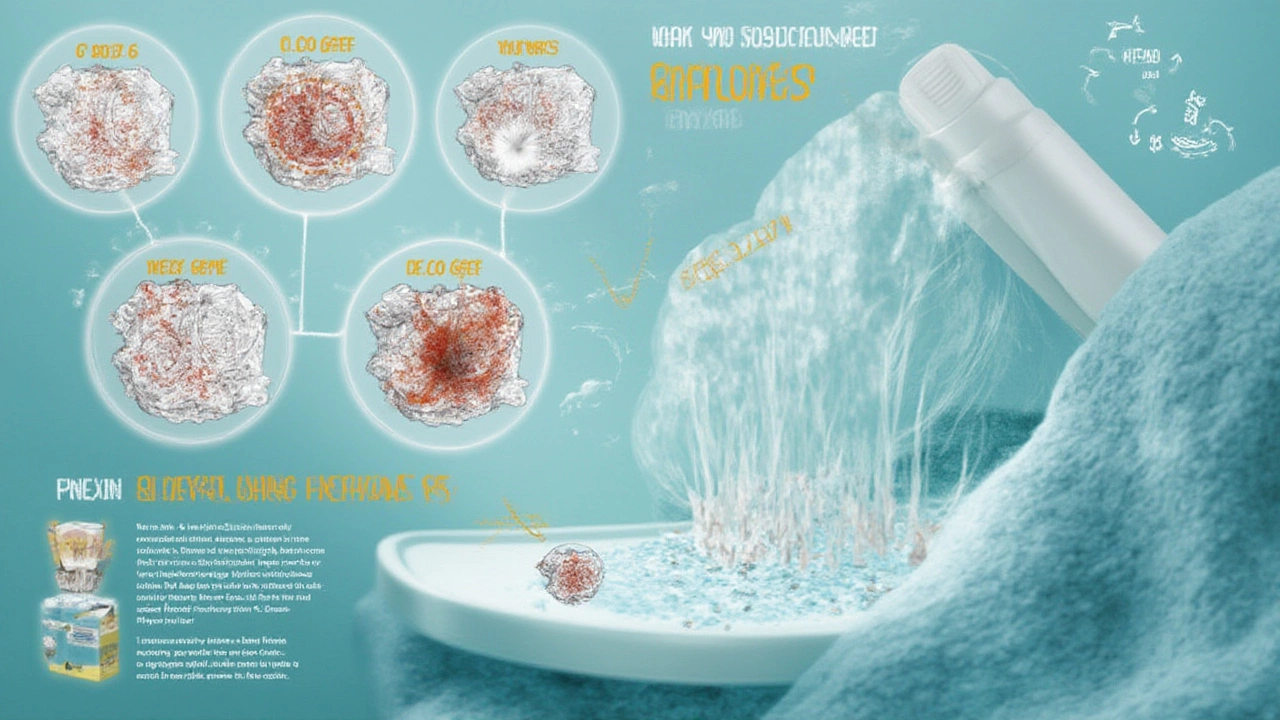
How to Maintain Your Upholstered Furniture for the Long Haul
Preventing stains is way easier (and cheaper) than constantly battling with them. Sounds obvious, but a few habits really change the life of your couch or favorite lounge chair. Flip and rotate cushions every couple of weeks to even out the wear. Vacuum upholstery weekly—seriously, this keeps dust from working into fibers and turning them dingy. Attach a HEPA filter to your vacuum to snag allergens (great news for hay fever sufferers).
Spot clean the moment you see a spill—even the smallest water ring will set if ignored for a couple of hours. Keep a small spray bottle of your favorite homemade cleaner under the sink. Dust arms and backs of furniture with a slightly damp cloth; static from dry microfiber attracts everything from crumbs to hair, so a light mist helps, too.
Set house rules if you can—no eating spaghetti in the living room. If you’ve got furry roommates, cover high-traffic spots with a washable throw or blanket. It’s easier to wash the cover than deep clean an entire sofa. In homes with a lot of sun, try to block out the harshest rays during peak hours, since UV will fade colors over time.
If you want pro results, steam clean furniture every 6 to 12 months with a rented machine (or your own if you’re fancy). Always follow up with a vacuum after drying to fluff the fibers back up.
Here are a few quirky tips that actually work:
- Rub a dry chamois cloth over the fabric to bring back the nap on velvet and microfiber—it works like magic.
- Apply a thin layer of fabric protection spray every couple years; look for the kind that’s kid and pet safe.
- Stop static cling (and extra hair) by rubbing an inflated balloon lightly over the upholstery.
These little habits seriously extend the life and look of your furniture, way beyond what most people bother with.

